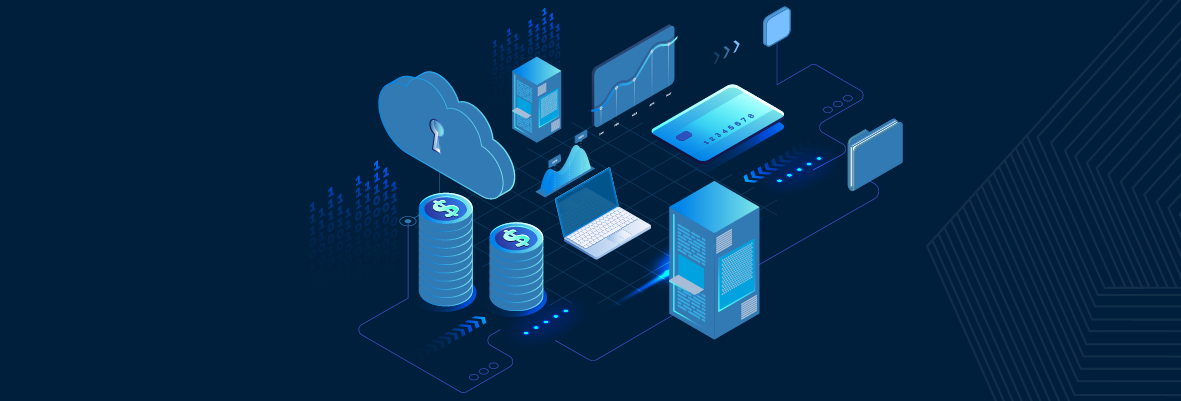The following first appeared on Forbes.
In enterprise IT, technical debt comes in the form of legacy hardware and software, inefficient maintenance processes, lack of scalability or resiliency, poor user experiences, outdated communications or code that's inadequately maintained. Technical debt is both silent and far-reaching in its impact; in fact, the latest research conducted by Google found that "respondents with high technical debt were 1.6 times less productive and that the highest performers were 1.4 times more likely to have low technical debt." In IT infrastructure and operations (I&O), technical debt makes it difficult to modernize your business and adapt to changing market forces because it diverts resources away from meaningful investments.
The flavors of technical debt.
In the past, systems were deployed to address immediate pain, and processes were put in place to manage them. But business changes over time, and market shifts, pivots, new management, mergers, acquisitions, transformation requirements and economics force IT operations in different technology directions.
Today, the modern enterprise is filled with disparate tools and platforms costing more money than they save or produce. However, technical debt isn't just related to tools. It actually has three flavors: process, people and technology.
- Process debt is the lack of appropriate frameworks to operate in a modern way using modern systems.
- People debt is the lack of workforce skills to negotiate new trends and technological opportunities like artificial intelligence or cloud.
- Technology debt is buried in the legacy toolset that's probably now expensive, difficult to manage, unruly and unable to cope with the demands of digital transformation.
Let's address how we tackle this debt in a systematic, transformational way.
Start with the framework.
Of these three flavors, I believe process debt is the most dangerous, not just because it keeps an organization stuck in a legacy cycle but because it facilitates a dangerous organizational narrative that's buried in phrases like, "If it's not broke, don't fix it," or, "That's just not the way we do things here." It's the story we tell ourselves that keeps us caught in a cycle of escalating debt.
Process upgrades (including policies, runbooks and plans for disaster recovery, support and other nonfunctional requirements) will ultimately have cascading effects downstream into technology and culture modernization. Managing waste out of existing processes will help streamline IT functions, systems and tools, and it reduces risk by eliminating churn and cumulative errors. A simplified technical debt reduction framework will help you identify what needs updating, what to prioritize and where to revise the legacy IT mindset. But where to begin?
#1 - Get a top-down view of your existing technical infrastructure.
Existing and shadow IT presents an enormous challenge to digital transformation. From my experience, if your roadmap leads to the cloud or is already operating in a hybrid mode, there may be more going on than you realize:
- Use a management tool or partner to identify and consolidate systems, applications, networks, devices, accounts, (code/data) repositories and anything else you can inventory.
- If you have standard operating procedures, policies, and documentation, then you should index and centralize them. You may want to interview ITOps and DevOps teams to understand product and operations cycles.
- Somebody may have tried this approach before, so look for external subscriptions, service offerings, business partners, management platforms and orphaned initiatives.
- Analyze costs across the spectrum — past, present, ongoing and future (previously committed).
- Collate the above and deliver an architectural review to leadership (C-suite and board).
#2 - Map business services.
The new era of hybrid IT is business-service-centric, not component-centric. In my opinion, you should map your infrastructure according to business service value so you know how IT services are composed and consumed:
- Compare currently running services to industry benchmarks or best practices, then identify gaps and deficiencies with respect to your leadership's goals such as earnings, product metrics, etc.
- Net out productivity gains from previous investments using total cost of ownership studies if available or conducting internal return on investment analysis through OpEx/CapEx tools.
- Survey users on satisfaction, usage, experiences/interfaces, capabilities and other indicators commensurate with your industry.
- Use analytics to align these signals into a visual service map that shows elements, infrastructure, topology and relationships to demonstrate both effectiveness and areas for improvement.
#3 - Prioritize and automate.
Now that you can see different business services, I believe you should create a plan to prioritize the business-critical technical debt that's holding back your most important operational and customer-facing services.
- Engage membership from every functional area of the company to participate in reviewing, resourcing and planning the roadmap.
- Set realistic boundaries, scope and schedules to avoid tradeoffs that result in even more debt.
- Create a regular review cadence to measure progress, take feedback and correct course as necessary.
- Look for opportunities to implement future-proof innovations, such as public cloud infrastructure, cloud-native tools (serverless/containerization, Kubernetes), artificial intelligence for IT operations (AIOps) and enhanced automation.
Debt financing for future returns.
Indeed, not all debt is necessarily bad, as the business needs to achieve results and choices must be made. However, it must be settled before progress can be made. Modernizing your increasingly hybrid IT infrastructure provides an opportunity to not only realign your technical priorities to those of your business but to rid yourself of antiquated mindsets and inefficient processes. If you design in anticipation of future change, I believe your technology platform will be more resilient and will scale more cost-effectively.
Technical debt doesn't have to be crippling. However, like any other problem, the more systematically you can solve it, the less impact it ultimately has.
Next Steps:
- Sign up for our upcoming roundtable: The Six Steps to Becoming a Top-Performing IT Operations Organization
- Join us for a reception we're co-hosting with HPE at AWS re:Invent
- Schedule a custom demonstration of the OpsRamp platform.






